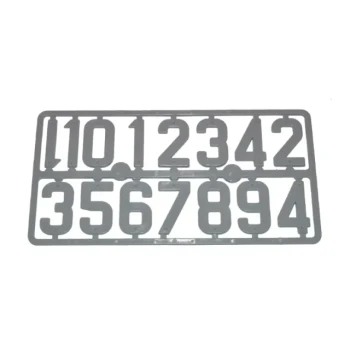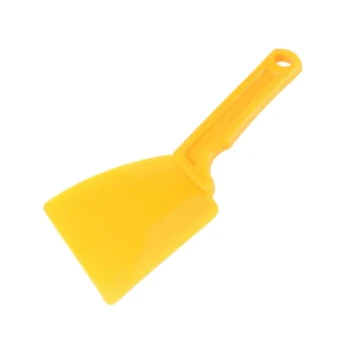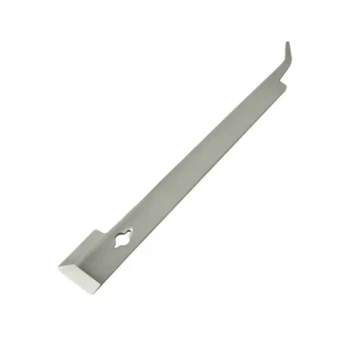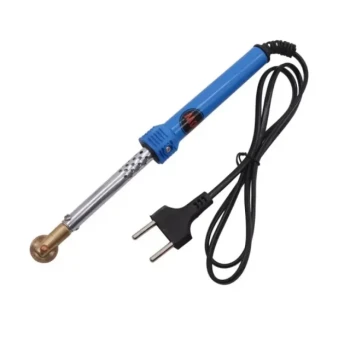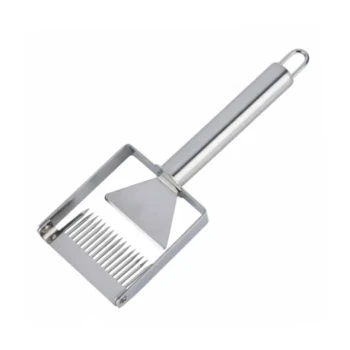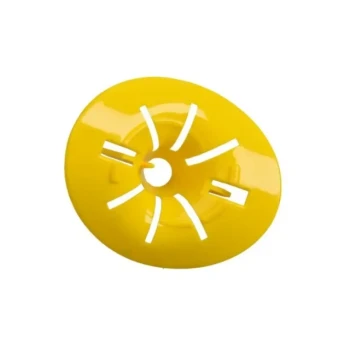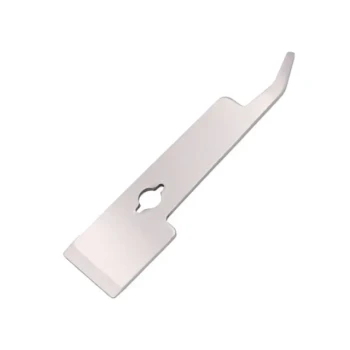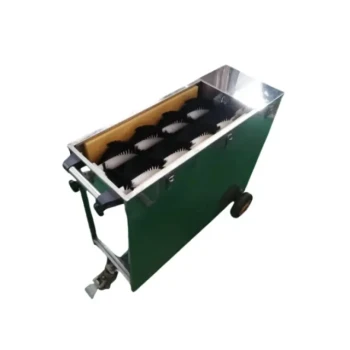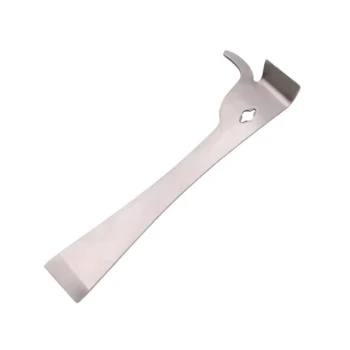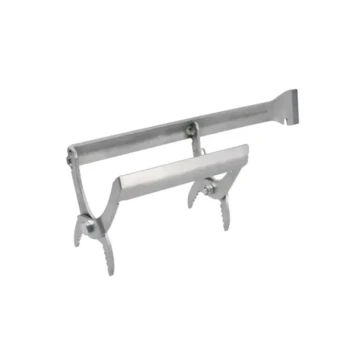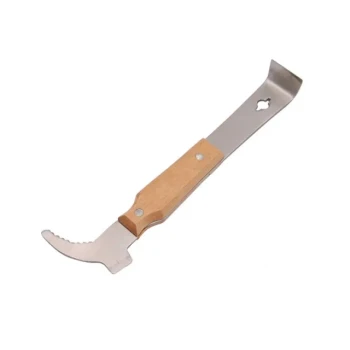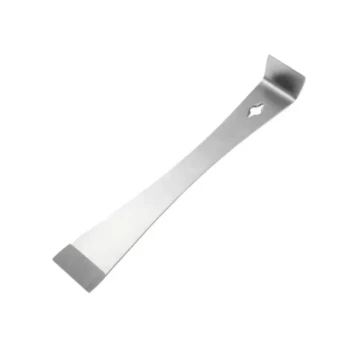To put new bees in a hive, the core process involves securing the queen in her cage inside the hive, then gently shaking the remaining container of bees into the empty space. You then close the hive and provide a sugar water feeder, allowing the colony to calmly acclimate and release the queen over the next few days.
The goal of installation is not just to move bees from one box to another; it's to convince a new colony that this hive is their home. Success depends on a gentle introduction, proper placement of the queen, and providing immediate resources to fuel their critical initial work.
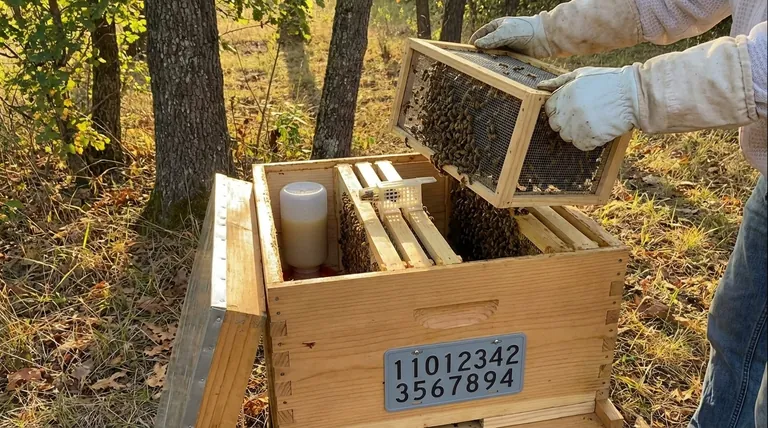
Preparing for a Smooth Installation
A successful installation begins long before the bees arrive. Proper preparation minimizes stress on both the bees and the beekeeper, setting the stage for a thriving colony.
Choose and Prepare the Location
Your hive should be in its final, permanent location before the bees are introduced. Choose a spot that gets morning sun, has afternoon shade, and is sheltered from strong winds.
Assemble the Hive Interior
For a typical package installation, you will not need all the frames. Remove 4-5 frames from the center of the brood box to create a large open space to pour the bees into.
Place a Feeder
Newly installed bees have a monumental task: building wax comb from scratch. Place a feeder inside the hive and fill it with a 1:1 sugar water solution to give them the energy they need for this critical job.
Understand Your Bee Source
Bees typically arrive in one of two forms. A package is a screened box of loose bees with a caged queen, while a nuc (nucleus colony) is a small, functioning hive with 4-5 frames of comb, brood, and a laying queen. The installation process varies slightly between them.
The Installation Process Step-by-Step
This process focuses on installing a typical bee package, the most common method for new beekeepers.
1. Let the Bees Settle
Your bees may be stressed from travel. If possible, set their package or nuc box next to the new hive for a few hours to allow them to calm down and acclimate to the location.
2. Secure the Queen Cage
Locate the queen cage within the package. Gently remove it and check to ensure the queen is alive. The cage will have a small cork or cap over a hole filled with a white sugar candy. Remove the cap, exposing the candy plug.
Wedge the queen cage between the top of two central frames. Position it so the screen is accessible to the worker bees, who will feed and care for her through the mesh while they chew through the candy plug to release her.
3. Gently Introduce the Worker Bees
Hold the bee package over the open space inside the hive. Give it a firm shake downwards to knock the bees to the bottom, then open it and gently pour and shake the bees into the hive.
Don't worry about getting every single bee. Most will fall into the open space around the queen cage.
4. Close the Hive
Carefully and slowly replace the frames you removed earlier, being careful not to crush any bees. Place the inner cover and top cover on the hive, ensuring any entrance reducers are set to the smallest opening to help the small colony defend its new home.
Common Pitfalls to Avoid
A calm, prepared approach can prevent the most common installation mistakes. Rushing the process is the primary source of problems.
Installing in Bad Weather
Never install bees in heavy rain or cold, windy conditions. The bees can become chilled and stressed, leading to a poor start. Wait for a calm, mild day, preferably in the late afternoon.
Dropping or Damaging the Queen
The queen is the single most important bee in the colony. Handle her cage with care. If you accidentally drop her, locate her immediately and gently guide her into the hive entrance.
Forgetting to Feed
A new package has no food reserves and no comb to store any. Failing to provide a continuous supply of 1:1 sugar water is one of the biggest reasons for a failed installation. They will starve without it.
Disturbing the Colony Too Soon
After installation, leave the bees alone. Resist the urge to inspect them for at least 5-7 days. This gives them time to release the queen, begin drawing comb, and establish the scent of their new home without interruption.
Making the Right Choice for a Thriving Colony
Your actions during installation directly impact the colony's long-term health and productivity.
- If your primary focus is minimizing stress: Perform the installation on a warm, calm afternoon and work slowly and deliberately to avoid agitating the bees.
- If your primary focus is rapid colony growth: Ensure the queen is successfully released after a few days and provide an uninterrupted supply of sugar syrup for the first several weeks.
- If you are installing a nuc instead of a package: Your goal is to preserve the existing nest structure, so transfer the frames into the new hive in their original order and orientation.
Ultimately, a successful bee installation is your first act of partnership with your new colony, setting the foundation for its future success.
Summary Table:
| Step | Key Action | Purpose |
|---|---|---|
| 1. Preparation | Choose a sheltered location, remove center frames, place feeder. | Creates a safe, ready environment for the new colony. |
| 2. Queen Introduction | Secure the queen cage between frames, expose candy plug. | Allows worker bees to gradually accept and release the queen. |
| 3. Add Worker Bees | Gently shake bees from the package into the open space in the hive. | Introduces the colony to their new home with the queen. |
| 4. Post-Installation | Close the hive, reduce the entrance, provide sugar water, and avoid disturbance for 5-7 days. | Gives the colony time to acclimate, build comb, and release the queen without stress. |
Set Your Apiary Up for Success with HONESTBEE
A smooth installation is just the beginning. Equip your commercial operation or distribution business with the reliable, high-quality supplies needed for long-term colony health and honey production.
HONESTBEE provides beekeepers and distributors with:
- Durable Hive Components: Built to withstand the elements and protect your investment.
- Essential Tools & Equipment: From smokers and feeders to protective gear, we have what you need.
- Wholesale-Focused Operations: Competitive pricing and bulk options for commercial apiaries and equipment distributors.
Ready to strengthen your beekeeping business? Let's discuss your specific needs.
Contact HONESTBEE today to get a quote on our wholesale supplies.
Visual Guide
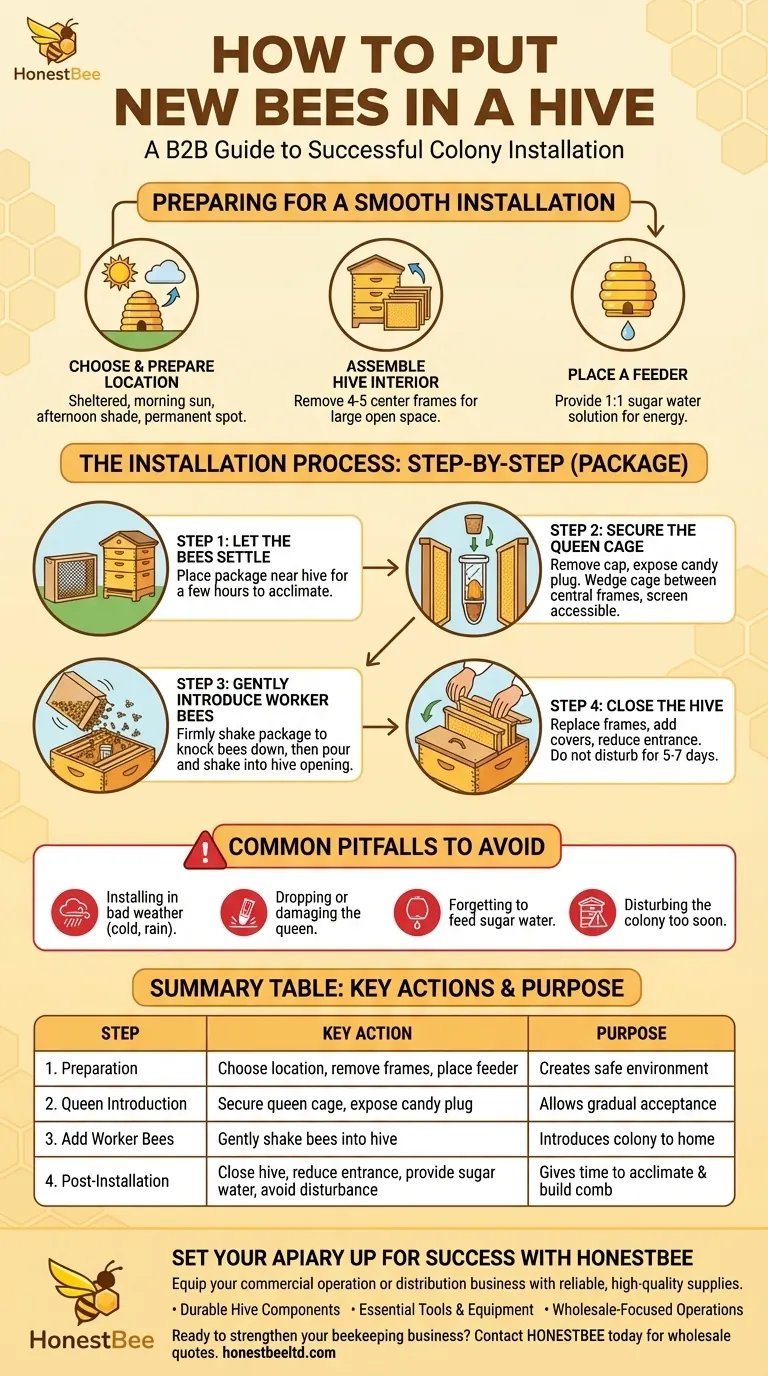
Related Products
- Modern Flat-Mount Hive Number Set for Beekeeping
- Long Langstroth Style Horizontal Top Bar Hive for Wholesale
- Professional Insulated Winter Hive Wrap for Beekeeping
- Professional Dual-End Stainless Steel Hive Tool for Beekeeping
- HONESTBEE Advanced Ergonomic Stainless Steel Hive Tool for Beekeeping
People Also Ask
- How does the inspection process differ between Langstroth and top bar hives? A Guide for Beekeepers
- Which type of bee hive is best? Find the Perfect Hive for Your Beekeeping Goals
- What maintenance is required for hive straps? A Guide to Cam Buckle vs. Ratchet Strap Care
- What is a Flow Hive? A Modern Design for Easier, Gentler Honey Harvesting
- How is the universal hive used for pollination services? Optimize Colony Strength for Contracts
